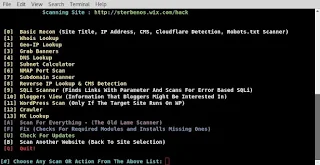Oracle Java 8 was released yesterday and it can be installed in Debian by using the WebUpd8 Java PPA repository.
Usually, the packages available in Launchpad PPAs don't support Debian because they are built against specific Ubuntu libraries, but since the WebUpd8 Oracle Java PPA contains just an installer, it works on Debian too.
Using this PPA repository, you'll be able to install Oracle Java 8 (which includes both JRE8 and JDK8) in Debian for both 32bit and 64bit as well as ARM (ARM v6/v7 Hard Float ABI - there's no JDK 8 ARM Soft Float ABI archive available for download on Oracle's website).
The installer automatically downloads and installs Oracle JDK8, but no actual Java files are available in our repository (that's not allowed by the Oracle Java license).
For Ubuntu / Linux Mint installation instructions, see: Install Oracle Java 8 In Ubuntu Via PPA Repository [JDK8]
Install Oracle Java 8 (both JDK8 and JRE8) in Debian
 |
| Tested on Debian Wheezy but it should work with any Debian version |
To add the WebUpd8 Oracle Java PPA repository and install Oracle Java 8 in Debian, use the following commands:
su -
echo "deb http://ppa.launchpad.net/webupd8team/java/ubuntu xenial main" | tee /etc/apt/sources.list.d/webupd8team-java.list
echo "deb-src http://ppa.launchpad.net/webupd8team/java/ubuntu xenial main" | tee -a /etc/apt/sources.list.d/webupd8team-java.list
apt-key adv --keyserver hkp://keyserver.ubuntu.com:80 --recv-keys EEA14886
apt-get update
apt-get install oracle-java8-installer
exit
And that's it, Oracle Java 8 should now be installed and you should get automatic updates for future Oracle Java 8 versions, under Debian.
-----------------------------------------------------------
Update October 20, 2016:
Previously, this package would increment the Java priority to make it default. The oracle-java8-installer package now sets the Java priority to 1081, and that may or may not set it as default, depending on other Java packages you may have installed (for instance, if Java 7 is also installed, Java 8 becomes default, but if Java 9 is installed, Java 8 doesn't become default).
To make Java 8 default, you must install the "oracle-java8-set-default" package (which configures the Java environment variables and sets it as default), which I added as a "Recommended" package to "oracle-java8-installer".
For instance, in Ubuntu, recommended packages are automatically installed, so "oracle-java8-set-default" should be installed when installing "oracle-java8-installer". In Linux Mint on the other hand, recommended packages are not installed by default, so you must install this package manually if you want to set Oracle Java 8 as default.
So,
if you want to set Oracle Java 8 as default, no matter what other Java versions are installed, make sure that you install the
oracle-java8-set-default package (which, again, should be automatically installed with the main Oracle Java Installer package in Ubuntu, but not in Linux Mint):
sudo apt-get install oracle-java8-set-default
If you don't want to make Oracle Java 8 default (it might still be set as default, depending on what other Java versions you may have installed), install the oracle-java8-installer with "--no-install-recommends":
sudo apt-get install --no-install-recommends oracle-java8-installer
Note: removing the oracle-java8-set-default package does not undo all the changes (I have yet to find a way to do this properly). If you don't want to set it as default, remove both oracle-java8-installer and oracle-java8-set-default packages, and then install oracle-java8-installer with "--no-install-recommends" (like mentioned above).
-----------------------------------------------------------
Tip: if you're behind a firewall / router that blocks some of the redirects required to download the Oracle Java archive, you can download the JDK tar.gz archive manually and place it under /var/cache/oracle-jdk8-installer - then, installing the "oracle-java8-installer" package will use the local archive instead of trying it to download it itself.
After installing Oracle Java and the "oracle-java8-set-default" package, you can check out the Java version on your system by using these commands:
java -version
This should display something like this:
java version "1.8.0_111"
Java(TM) SE Runtime Environment (build 1.8.0_111-b14)
Java HotSpot(TM) 64-Bit Server VM (build 25.111-b14, mixed mode)
Or:
javac -version
Which should display something like this:
javac 1.8.0_111
For how to install Oracle Java 7 in Debian, see THIS article.
For Oracle Java 9, see THIS article. How to accept the Oracle JDK8 license automatically
The Oracle Java 8 installer requires you to accept the Oracle license before the installation begins. If for some reason you want to accept the license automatically, you can use the following command:
echo oracle-java8-installer shared/accepted-oracle-license-v1-1 select true | sudo /usr/bin/debconf-set-selections
Update: if the command above doesn't work, use the following (thanks to
Adam!):
echo oracle-java8-installer shared/accepted-oracle-licence-v1-1 boolean true | sudo /usr/bin/debconf-set-selections






